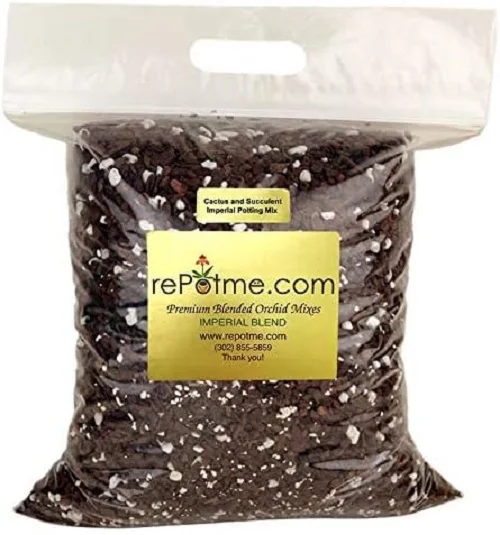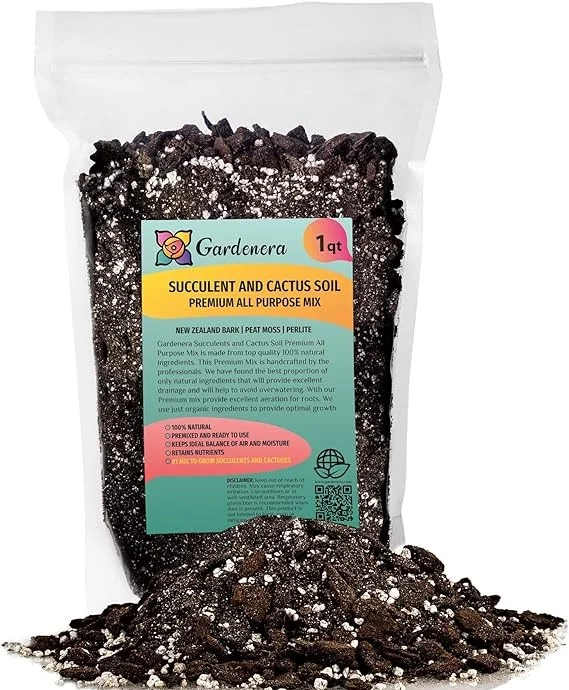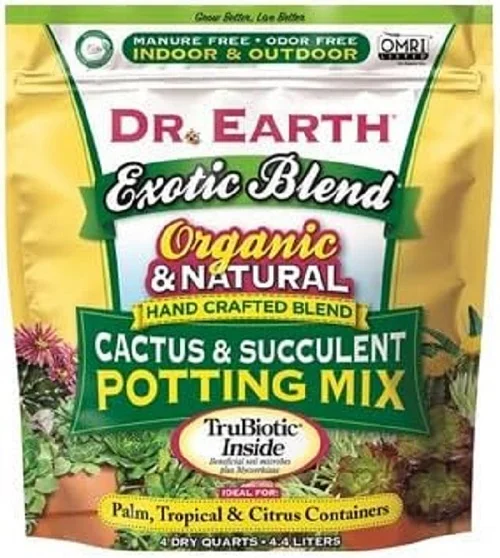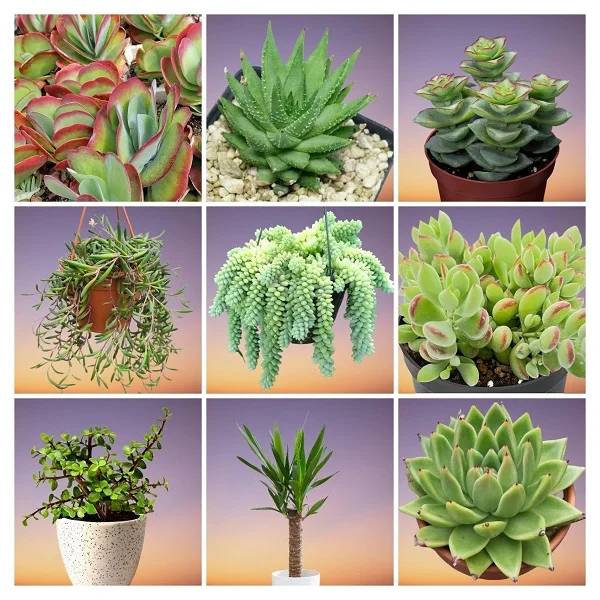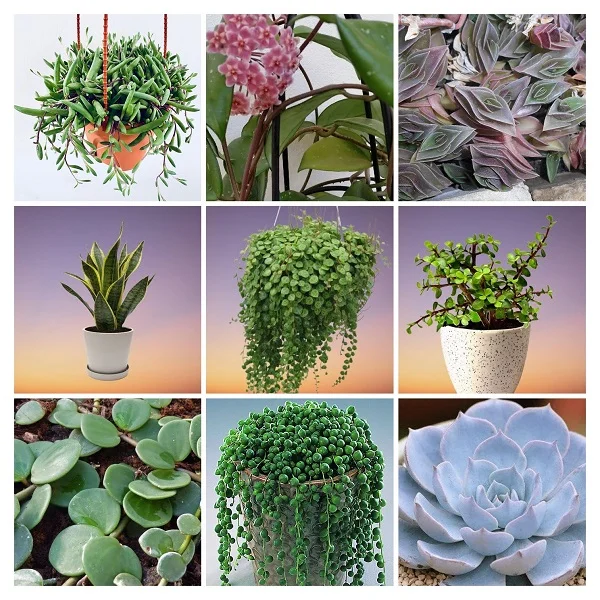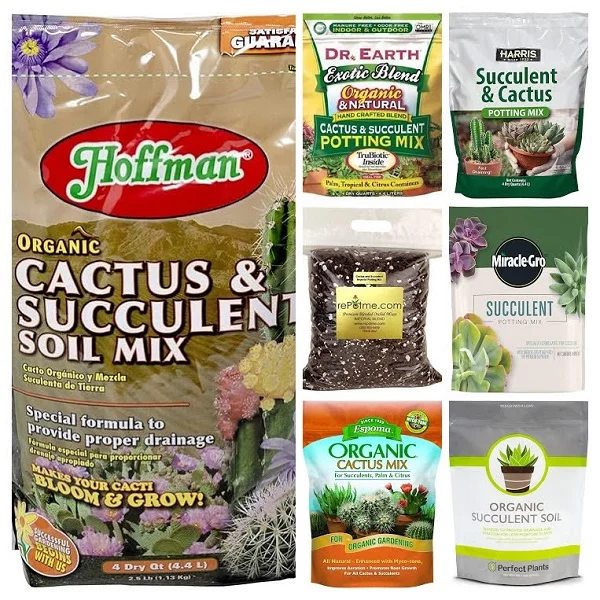How to Grow and Care for Gasteria (Ox-tongue Plants) Indoors
Some links in this post may be affiliate links
Gasteria (Ox-tongue Plants) thrive in bright light with some direct sunlight, average warmth, moderate humidity and moderately moist, fertile, well-drained soil coupled with monthly feeding in the growing season.
Gasteria Plants are recognizable from their thick, hard, succulent "tongue-shaped" leaves and hence their common names Ox-tongue, Cow-tongue, Lawyer's Tongue and occasionally Mother-in-law's Tongue.
The leaves in Lawyer's Tongue Plant are arranged in two rows forming a fan-like shape which becomes an untidy rosette as it is formed. Usually, young Gasteria succulents have flat, strap-shaped leaves in an alternate (spiral) pattern, with each leaf arising at a different point (node) on the stem.
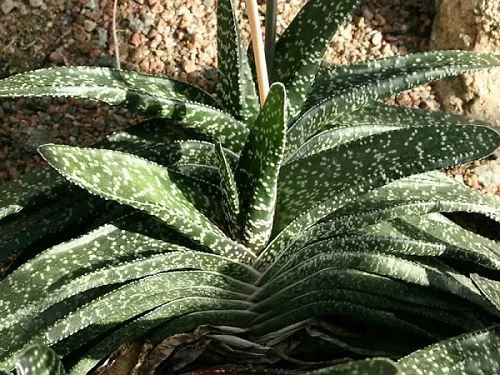
Gasteria carinata
Botanical name: Gasteria
Family: Asphodelaceae
Sufamily: Asphodeloideae
Common names: Ox-tongue, Cow-tongue, Lawyer's Tongue, Mother-in-law's Tongue
Origin
Plants in the Gasteria genus are mostly native to Eastern Cape Province of South Africa and extends into the far south-west corner of Namimbia and the Lebombo mountains of Swaziland.
How big can Gasteria grow?
Gasteria are small, slow-growing, succulent plants which grow to a a height of 24 inches and a spread of 12 inches.
Flower
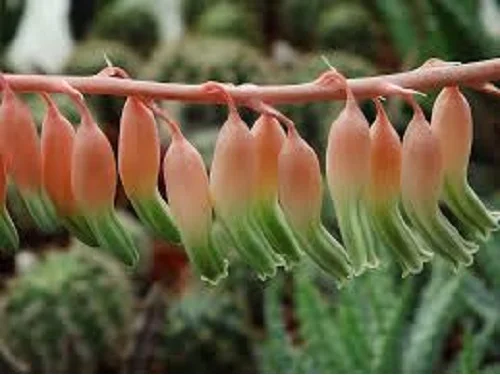
Gasteria inflorescence
The inflorescence in Gasteria is unique with their curved, stomach-shaped flowers hanging from inclined racemes; the oldest flowers are borne towards the base and newest flowers are produced as the shoot grows, with no predetermined growth limit.
This characteristic inflorescence has given this genus its name Gasteria. "Gaster" is Latin for stomach. The plant only flowers when mature after about 2-4 years.
Varieties
Ox-tongue Plant leaves may be warty like in Gasteria verrucosa or smooth like in Gasteria maculata. The color of leaves in Gasteria vary from dark-green to light-green. Some are spotted with light shades of green or grey-green. Many hybrids have been developed like, Gasteria bicolor which features thick, flat leaves with striped patterns.
The Gasteria Succulents are extremely difficult to divide into species as each plant can be highly variable depending on its location, its soil and its age. As many as 100 names have been listed. Current studies tend to agree that there are between 16 and 23 species.
Is Gasteria Plant toxic?
No. Gasteria are non-toxic to both humans and pets. Lawyer's Tongue Plants are safe for cats, dogs and other pets in the home.
Related Plants
Gasteria genus is closely related to the genera Aloe and Haworthia. The species of these genera are known to hybridise relatively easily with each other.
Where to Buy
If you would like to add Gasteria plants to your collection, they are available online on Etsy (Link to Etsy) and on Amazon (Link to Amazon).
How do you care for a Gasteria Plant indoors?
To care for a Gasteria Plant indoors provide bright light with 6-8 hours of direct sunlight, average warmth of 18-290C, moderate humidity of 50-55% and moderately moist, fertile, well-drained soil coupled with monthly feeding during the growing season.
Ox-tongue Succulents care require pruning to keep them neat and reduce pest and disease infestations. Repotting is only needed when they become pot-bound. Keep reading for more on these growing conditions and how to provide them.

Gasteria brachyphylla
Watering
How often should you water a Gasteria?
Water Gasteria liberally in spring and summer while allowing the top 2-3 inches of soil to dry out between waterings. Maintain the soil moderately moist and avoid soggy soil to prevent yellowing and rotting.
Significantly decrease watering in fall and winter to keep the soil slightly moist as growth is minimal at this time. However, do not allow the soil to dry out completely to avoid wilting and shrivelled leaves.
Use water that is at room temperature to avoid plant shock as it can result in reduced growth and death of the plant.
Ascertain that the pot has a drainage hole and the soil is well-draining to prevent it from getting soggy which cause rotting and death of the plant.
Take care not to wet the center of the rosette as it can lead to rotting; water from the bottom instead.
Light Requirements
Does Gasteria like sun or shade?
Gasteria succulents like bright light with 6-8 hours of morning or late afternoon sunshine. Keep it away from hot midday sunlight as it can scorch the leaves.
Where the natural lighting is not adequate, you may use grow lights to supplement it and prevent loss of leaf color.
For a balanced growth, regularly rotate the pot to ensure that the plant receives light on all sides.
Temperature and Humidity
Gasteria grow best in an average warmth of 18-290C. The sudden change in temperature between day and night is good for the growth of these succulents.
Keep Gasteria away from both cold and hot drafts to prevent extreme temperatures which can cause slowed growth and death of the plant.
Ox-tongue Plants have no need for extra humidity. Average room humidity of 50-55% is ideal for these plants. Maintain a good air flow for these plants to minimize fungal diseases.
Potting Soil
What is the best potting mix for Gasteria?
The best potting mix for Gasteria is a rich, loose, free-draining soil to prevent waterlogging; the mix should be loose enough to allow water to drain out fast enough. A blend of 2 parts cactus & succulents potting mix, 1 part perlite or pumice, and 1 part coarse sand or gravel is perfect for these plants.
Fertilizer
What kind of fertilizer for Gasteria?
Gasteria are slow growing plants that do not need frequent feeding. Therefore, feed Gasteria Succulents with a succulents fertilizer every 4 weeks in spring and summer to promote a lush growth.
Withhold feeding in fall and winter to avoid fertilizer burn as growth is slowed at this time.
Repotting
When to repot Gasteria?
Repot Gasteria at the beginning of the growing season (spring to early summer), only when it becomes pot-bound.
How to repot a Gasteria?
- Use a shallow rather than a deep pot as it has shallow roots. Select a pot only 1 size larger than the current one and one that has a drainage hole. Check out these succulents pots available on Amazon.
- Fill the pot to a third way full with sandy, well-draining soil and slightly moisten the soil.
- Carefully, slip the plant out of its pot, shake off the soil from the rootball and cut away any dead roots.
- Position the plant in the center of the pot and fill with the soil while firming it around the base. Maintain the plant at the same soil level as it was in the previous pot.
- Wet the soil thoroughly and return the plant to its usual location.
Pruning
How to prune Gasteria?
Pruning Gasteria involves:
- Removal of dead or diseased leaves to maintain the plant neat and discourage pest and disease infestations.
- Cut the leaf at the base with a sharp knife or a pair of pruning scissors to detach it from the stem.
- Avoid excessive injury to minimize fungal and bacterial infections.
Gasteria Propagation
Gasteria Plants are propagated from offsets (pups) which form at the base of the plant, from leaf cuttings or from seeds. The best time to propagate is at the beginning of the growing season (spring to early summer) when the plant is actively growing.
Learn how to propagate Gasteria from pups, leaf cuttings and seeds.
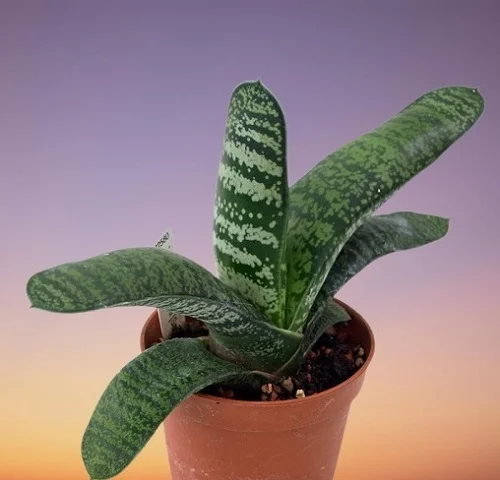
Gasteria disticha
Gasteria Problems & Solutions
Gasteria problems are brown leaves, yellow leaves, loss of leaf color, wilting and drooping leaves, pests and diseases among others. Keep reading for more on these problems and their remedies.
Brown leaves
Why is my Gasteria turning brown?
Your Gasteria is turning brown due to inconsistent watering, soggy soil, hot direct sunlight, and extreme temperatures.
How to fix it
Inconsistent watering: Water when the top 2-3 inches dry out. Never allow the soil to dry out completely. Do not water on a schedule.
Soggy soil: Use a pot with a drainage hole and loose, well-draining soil.
Hot direct sunlight: Place the plant away from hot midday sunshine or use a light curtain to filter it.
Extreme temperatures: Keep the plant away from drafts coming from AC units, drafty windows, heat sources, windy doors and others.
Yellow leaves
Why is my Gasteria turning yellow?
Your Gasteria is turning yellow due to soggy soil, overwatering, temperature stress, and nutrient deficiency.
How to fix it
Soggy soil: Use a sandy, free-draining soil and a pot with a drainage hole.
Overwatering: Do not water on a schedule. Water only when the top 2-3 inches of soil feel dry.
Temperature stress: Keep the plant away from drafts originating from hot surfaces, hot air vents, AC units, windy doors, drafty windows among others.
Nutrient deficiency: Apply a water-soluble, succulents fertilizer every 4 weeks in spring and summer.
Loss of leaf color
Why is my Gasteria turning white?
Your Gasteria is turning white due to either too little light or too much light.
How to fix it
Too little light: Position the plant in bright light with 6-8 hours of morning or late afternoon sunlight. You may use a grow light if the natural light is not adequate.
Too much light: Move the plant to a more shaded place or use a sheer curtain to filter the light.
Wilting and drooping leaves
Wilting and drooping leaves on Gasteria are caused by underwatering, drafts and soggy soil.
How to fix it
Immediately water the plant thoroughly and it should recover.
Underwatering: Do not allow the soil to dry our completely; maintain it moderately moist in spring and summer and slightly moist in fall and winter.
Drafts: Keep the plant away from cold and hot drafts to avoid extreme temperatures.
Soggy soil: Ensure to use a pot with a drainage hole and loose, well-draining soil.
Pests
Common pests on Gasteria Plants are scales insects and mealybugs.
How to fix it
- Isolate the affected plant to prevent spread to the other plants and treat it with neem oil or insecticidal soap as per the manufacturers instructions.
- Regularly check underneath and between the leaves for these pests and carry out timely control measures.
- Keep the plant properly pruned and increase humidity to discourage the pest infestations.
Diseases
Gasteria Plants are prone to two diseases:
1. Leaf spot disease which is promoted by poor air circulation and presents as brown, soft leaf spots.
How to fix it
- Remove and burn the affected parts to reduce spread to the rest of the plants.
- Treat the affected plant with a systemic fungicide and ensure to follow the manufacturer's recommendations.
- Avoid wetting the leaves during watering to reduce the disease infestation.
- Ensure that there is good air circulation for the plant.
2. Basal stem-rot disease which is characterized by a rotting base, yellowing and shriveled leaves. The disease is prevalent in overwet conditions especially in the cold season.
How to fix it
- Remove and discard the infected parts to prevent spread to the rest of the plant.
- Cut down on watering in fall and winter to maintain the soil slightly moist; avoid overwatering.
- Do not wet the center of the rosette of leaves during watering to discourage the disease.
- Use a fungicidal solution ocassionally to water the plant to prevent the disease.
Frequently Asked Questions
1. Can you propagate Gasteria from leaves?
Yes. It is possible to propagate Gasteria from leaves but the process takes several months. Rooting is slow and not always successful.
2. How do you seperate Gasteria pups?
Using a clean, sharp knife or pruning scissors cut away the pups at the base just below the rosette from the mother plant.
3. Do Gasteria need direct sunlight?
Gasteria like bright light with 6-8 hours of morning or late afternoon sunlight but not hot midday sunshine.
4. What are the black spots on my Gasteria?
Black spots on your Gasteria are an indication of leaf spot disease which is prevalent in damp, stuffy conditions. Improve air circulation and avoid wetting the foliage during watering.
5. How long does Gasteria live?
Typically, under optimal growing conditions, Gasteria can last from several years to decades.
You liked it? Share on social media.
Related Content
Amazon Associates Disclosure
Homeplantsguide.com is a participant in the Amazon Services LLC Associates Program, an affiliate advertising program designed to provide a means for sites to earn advertising fees by advertising and linking to amazon.com.
